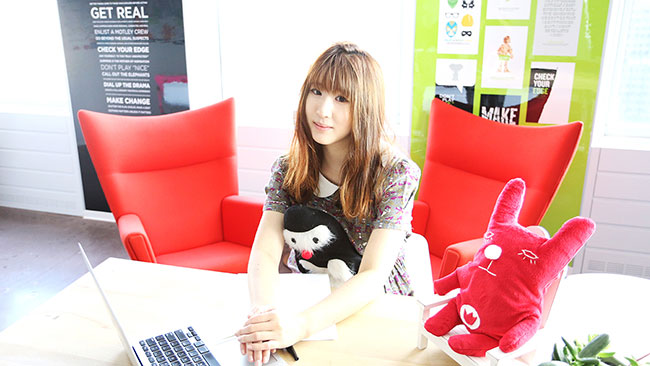
post written by Jackie Barr - Deloitte Consulting LLP
Chloe Koo is a visual experience designer in Deloitte Digital’s New York Studio. In her free time, she designs dolls for visually impaired children (age 3-5) through her company, HugMatch. Chloe’s dolls help children improve their hearing and sense of touch. We pulled Chloe aside for a quick Q & A to learn more about her amazing story and the creative process behind HugMatch.
Q. Can you explain what HugMatch is?
A. HugMatch is a game designed to help visually impaired children develop their sense of touch and hearing. The game is played in pairs or groups with dolls that are made with various fabrics and programmed to play different sound. The children are asked to match the dolls by fabric and/or sound. Inside each doll is an Arduino chip (open-source computer hardware) that is programmed to give verbal cues when the dolls are matched (both correctly and incorrectly). As children interact with the toys, they experience how to socialize, express their feelings, negotiate and cooperate with one another. In this interactive environment, kids can create their own rules and engage their imaginations.
Q.What inspired you to create this project?
A. I grew up around an uncle who has a disability and have also volunteered to help disabled people throughout my life. My interactions with my uncle and others who I met while volunteering inspired me to create a project that could benefit them. When it came time to work on my thesis at the Parsons School of Design, I knew that I wanted to create an interactive product with both a hardware and software component that improved the lives of individuals living with disabilities.
Q. What kind of design process did you go through to create this project?
A. To develop this product, I followed a design process that can be applied to many types of creative projects. I started by brainstorming and then moved on to research, prototyping, and user testing. In the user testing phase, I shared my doll with teachers who specialize in helping students with disabilities to get their input. I adjusted my idea based on the results of my tests and teacher feedback, and retested the product before releasing the fully fledged version.
Q. What kind of research did you conduct?
A. As part of my research, I observed children at schools that are designed to help with disabilities. I wanted to answer some questions for myself like, “Why do kids love toys so much?" and, "What is it about a toy that makes a children stop crying?” When you look at the history of toys, toys are not an invention of our civilization but they are a form of tool that fulfill our instinct to play and study. Once I realized this, I knew that I wanted to create a toy that matched this need and helped students learn.
Q. Where do you see this project headed next?
A. I don’t think the project is quite ready for the market. I would like to improve the toy's hardware so that they become safer and sturdier. When I am done, I want to donate HugMatch dolls to the schools where I conducted research and am also planning on launching a Kickstarter campaign.
Introduce HugMatch from HugMatch on Vimeo.

